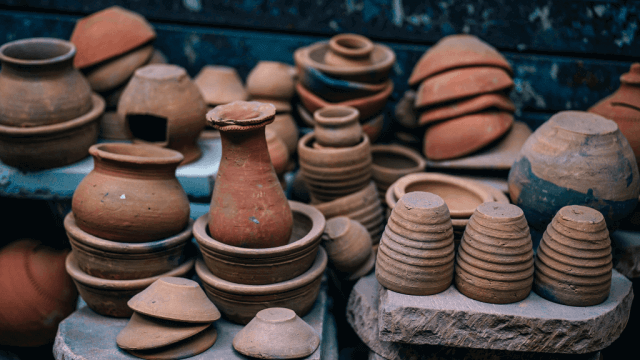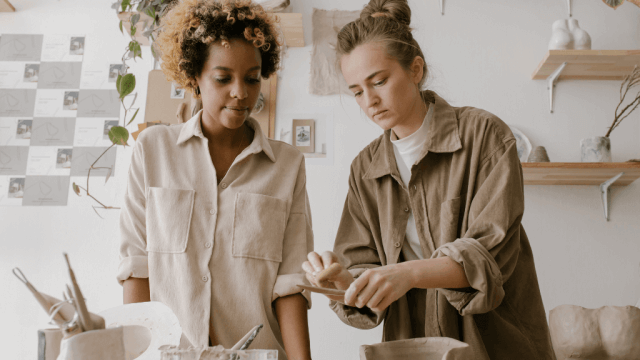While technically, it is possible to use a glass kiln for pottery, it is not recommended as the temperature may not reach the necessary level for firing ceramics. It is best to use a dual media kiln designed explicitly for glass and pottery, with automatic controllers and programming modes suitable for firing both materials. Glass can also be used in ceramic kilns, such as for mosaics or slumped forms.
What are some differences between a glass kiln and a pottery kiln?
The main difference between a glass kiln and a pottery kiln is that glass kilns generally heat a single layer from the top, while pottery kilns heat multiple layers from the side. Glass projects are relatively flat, so heating them from the top is more efficient. Also, glass kilns can fire to different temperatures than ceramic kilns. A dual media kiln can be used for both ceramics and glass, but it will use more power in the ceramic mode than in the glass mode.
Are there any limitations to what types of pottery can be fired in a glass kiln?
Yes, there are limitations to what types of pottery can be fired in a glass kiln. For example, some types of glass may not melt at lower temperatures, such as Cone 5. Additionally, the kiln must reach the required temperature for the kind of pottery being fired.
How do you adjust the firing schedule for a glass kiln when using it for pottery?
When using a glass kiln for pottery, the firing schedule should be adjusted to accommodate the different needs of the material. Generally, this involves using cone firings with predictable outcomes, holding at certain temperatures for specific periods, and heating from the sides toward the center. Understanding firing schedules is critical to successful glass fusing and casting, and a typical bisque firing in a manual kiln involves turning on all switches to medium-high heat and then candling on low for several hours.
What are some advantages and disadvantages of using a glass kiln for pottery?
The main advantage of using a glass kiln for pottery is that it can heat a single layer from the top, which is beneficial for creating delicate pieces. However, there are several disadvantages to using a pottery kiln for glass, such as the need to purchase additional equipment and materials. Additionally, ceramic kilns are better suited for firing ceramics because they can heat multiple layers at once. In contrast, gas kilns are specifically used in raku pottery due to their reduced firing capabilities. Size is essential when choosing an electric kiln, as smaller ones are better suited for making delicate pottery pieces.
Can you use the same glazes for pottery in a glass kiln as in a pottery kiln?
It is possible to use the same types of glazes for pottery in a glass kiln as you would in a pottery kiln, but it is vital to test the glass you intend to use in your kiln atmosphere. The main difference between a glass kiln and a ceramic kiln is that glass kilns generally heat a single layer from the top, and ceramic kilns heat from all sides. Additionally, there are two options for glazing pottery at home: a glaze-like alternative or a small domestic pottery kiln. This step-by-step guide covers how to glaze ceramics in traditional and DIY kilns, along with different types of glazes and their uses.











